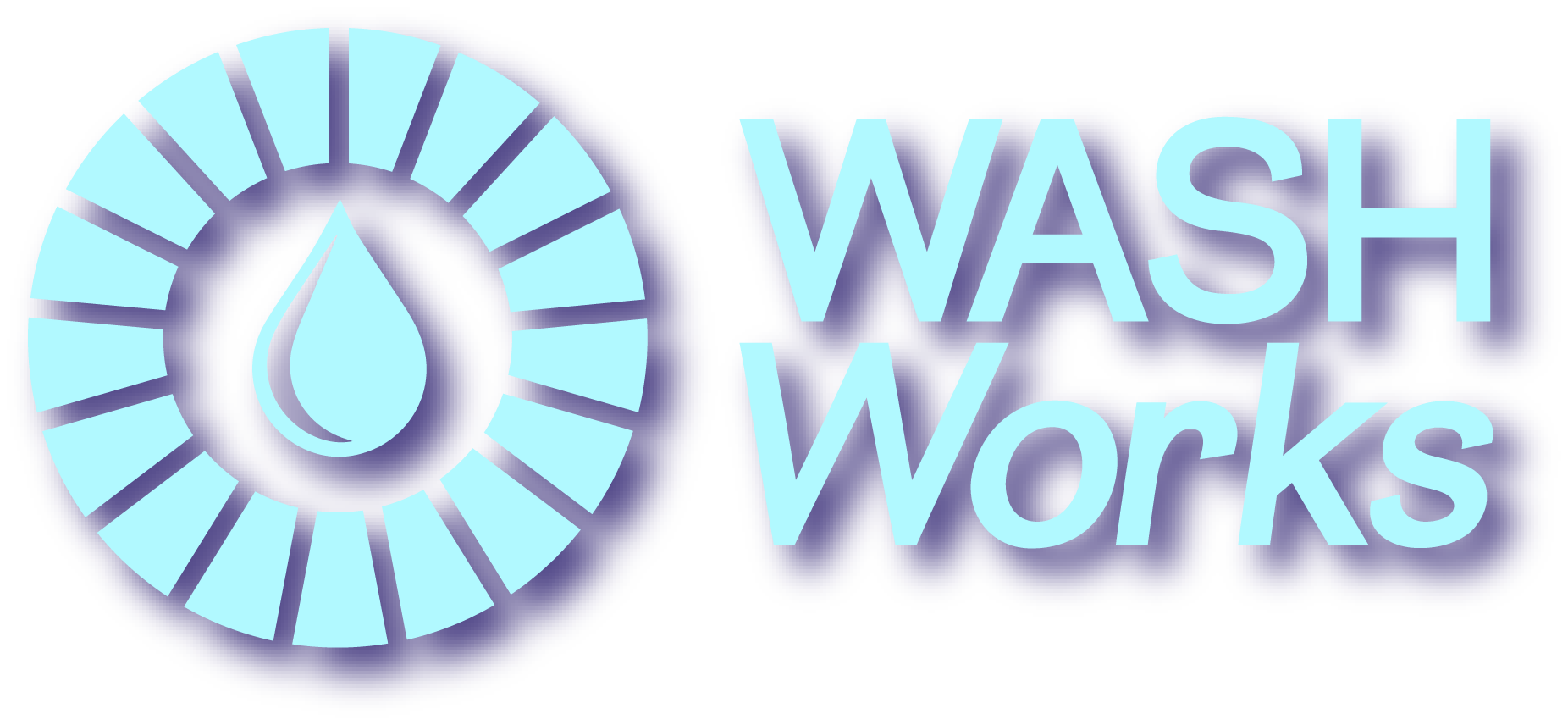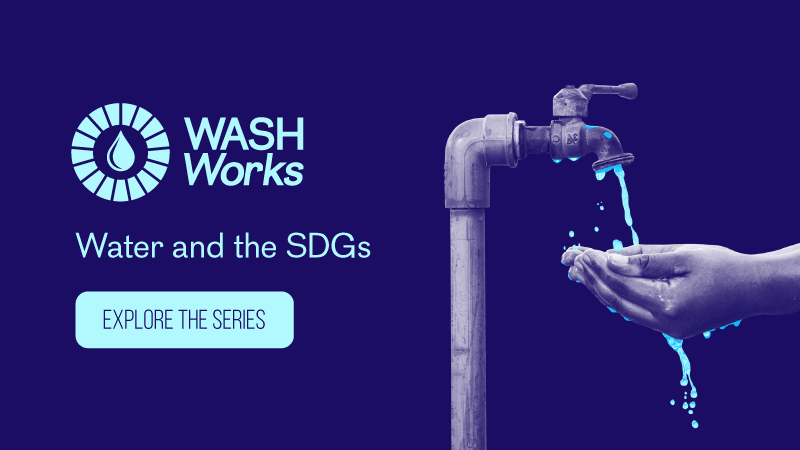Why marginalized voices are critical for resilient WASH services
A bottom-up approach that involves women and people with disabilities in the design process is key to inclusive and resilient WASH services.

Produced in partnership with


Around the world, extreme and unpredictable weather events as a result of climate change are making it harder for rural communities to access safe, clean water — and it’s often women and people with disabilities who bear the greatest burden.
In southern Indonesia and Timor-Leste, for example, heavy rainfall means water collection points in ravines become inaccessible for people with disabilities as well as elderly people or pregnant people. Jeremy Kohlitz, research principal at the Institute for Sustainable Futures at the University of Technology Sydney, told Devex about communities where only the strongest, most able-bodied people, often men, could make it up and down the steep, muddy path to collect water. Subsequently, people with disabilities become dependent on others to collect water for them and are limited in their own agency, explained Kohlitz, who worked on the Climate Change Response for Inclusive WASH research project funded by the Australian Government through the Water for Women Fund.
Then come the dry spells and droughts, forcing communities to ration the scarce water supplies for everyday activities, such as cooking and flushing the toilet, and leaving open defecation as their only option.
“That issue of open defecation affected everyone, but [some community members] much more profoundly,” Kohlitz said. “It brought about stress and anxiety for women [who faced sexual harassment and sometimes violence]; it disrupted their daily routines.”
As part of the research project, ISF-UTS has been helping to distill some of the more complex theories around climate change, resilience, and adaptation for partners on the ground to integrate these considerations in their existing WASH programs. In Timor-Leste, where almost 10% of the rural population lack access to basic drinking water services, WaterAid is focusing on improving rural water services. On the other hand, in Indonesia, where 11% of the rural population still practice open defecation, Plan International's efforts target sanitation facilities.
Devastation caused by Cyclone Fani in Tarini Basti, an informal settlement in Bhubaneswar, India, in May 2019. Photo: Basudev Mahapatra / CFAR

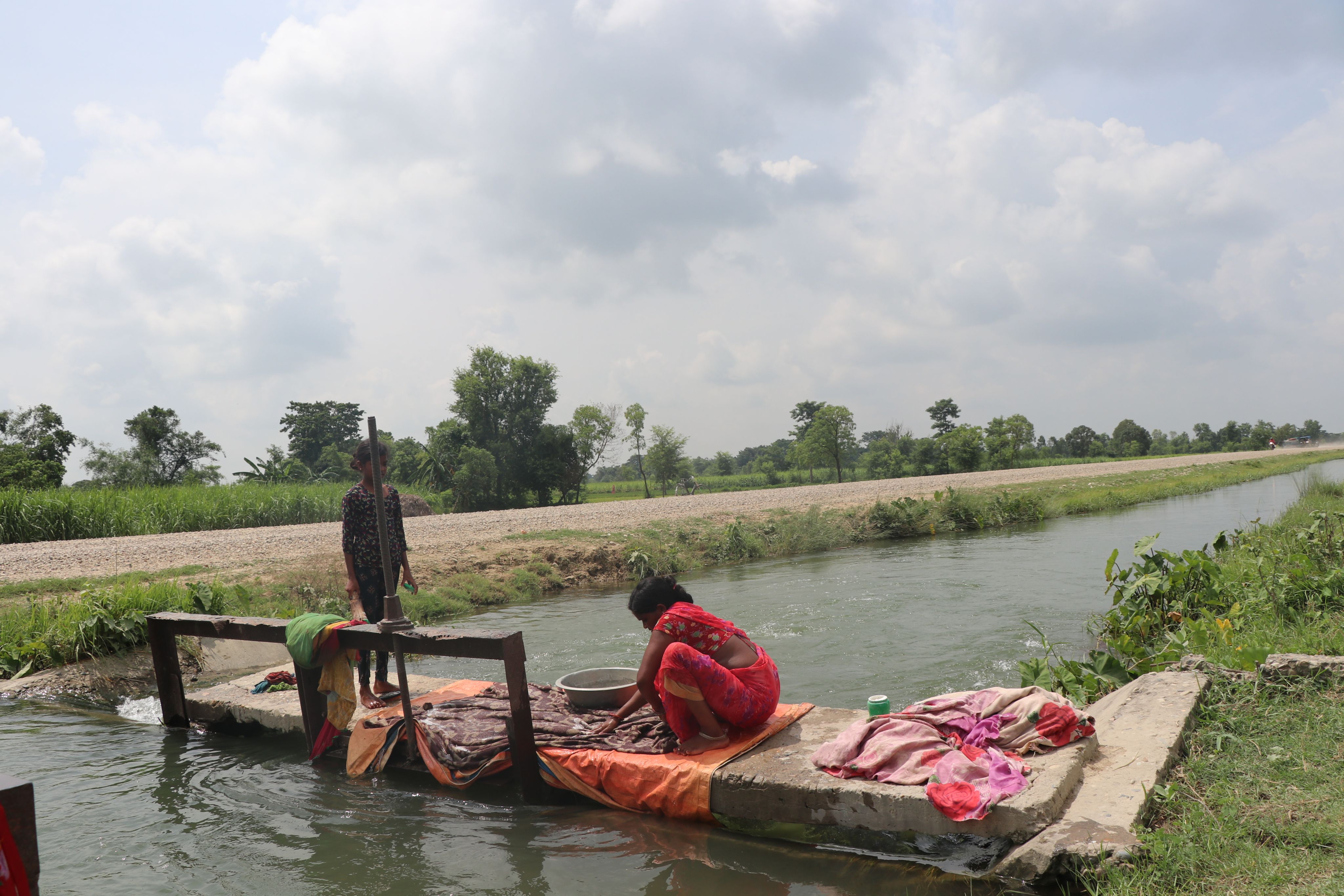
A woman using canal water to wash clothes in Sarlahi district, Nepal. Photo: Manita Raut / IWMI
A woman using canal water to wash clothes in Sarlahi district, Nepal. Photo: Manita Raut / IWMI
Considering the threats of climate change on WASH services
“[Civil society organizations] in the WASH sector really see climate change as a threat to progress,” Kohlitz said, “and they’re increasingly appreciative of the fact that climate change affects different groups of people in different ways.”
However, toolkits specifically designed for organizations working in water, sanitation, and hygiene are nascent or tend to focus on technological improvements, he said. And while technology is one piece of the puzzle, these tools “miss out on the ... socially constructed nature of unintended impacts.” This includes considerations around which populations or segments of the community will be most affected by extreme weather events, such as cyclones or droughts, and why they are more vulnerable in the first place.

An activity mapping climate change impacts on community members and WASH services. Photo: Jeremy Kohlitz / ISF-UTS
An activity mapping climate change impacts on community members and WASH services. Photo: Jeremy Kohlitz / ISF-UTS
Working closely with CSOs, Kohlitz’s team came up with several new methods for assessing the impact of climate change on their WASH services and programs. These methods often rely on techniques such as participatory rural appraisals that CSOs and local government partners are familiar with, Kohlitz explained. However, they don’t rely on the use of climate data or science, which can be difficult for local stakeholders to access and interpret.
One method, for example, uses community mapping exercises to help people report where flooding, waterlogging, or landslides occur most frequently. Another method facilitates conversations around the responsibilities of household members in relation to water collection and toilet repairs. “[These conversations] bring to light who in the family is taking on the increased burden when [there’s] extreme weather,” Kohlitz said.
Women and men in Manggarai, Indonesia, participate in an activity facilitated by ISF-UTS and Plan Indonesia to support community members to share their aspirations for a climate-resilient future. Photo: Jeremy Kohlitz / ISF-UTS
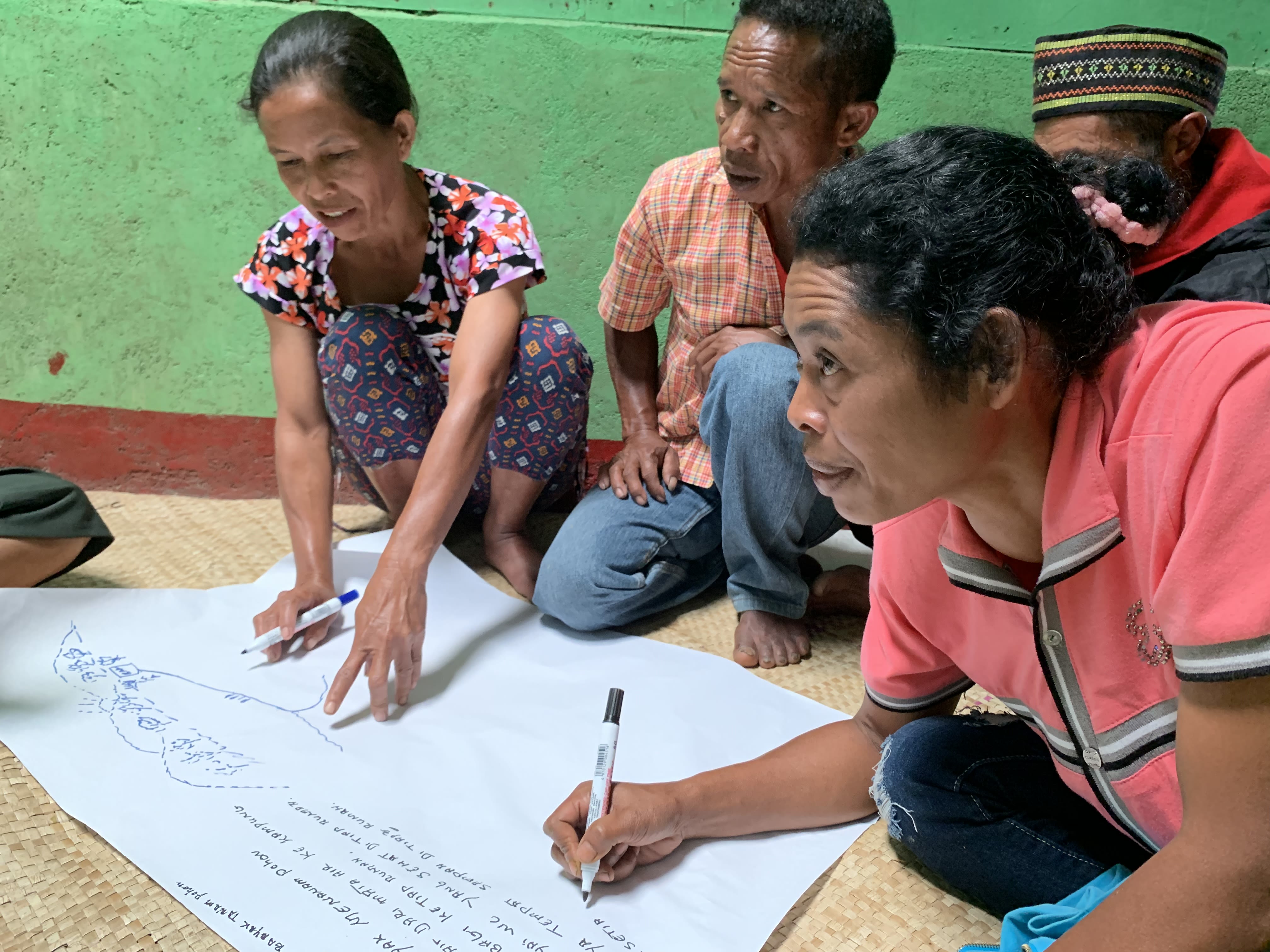
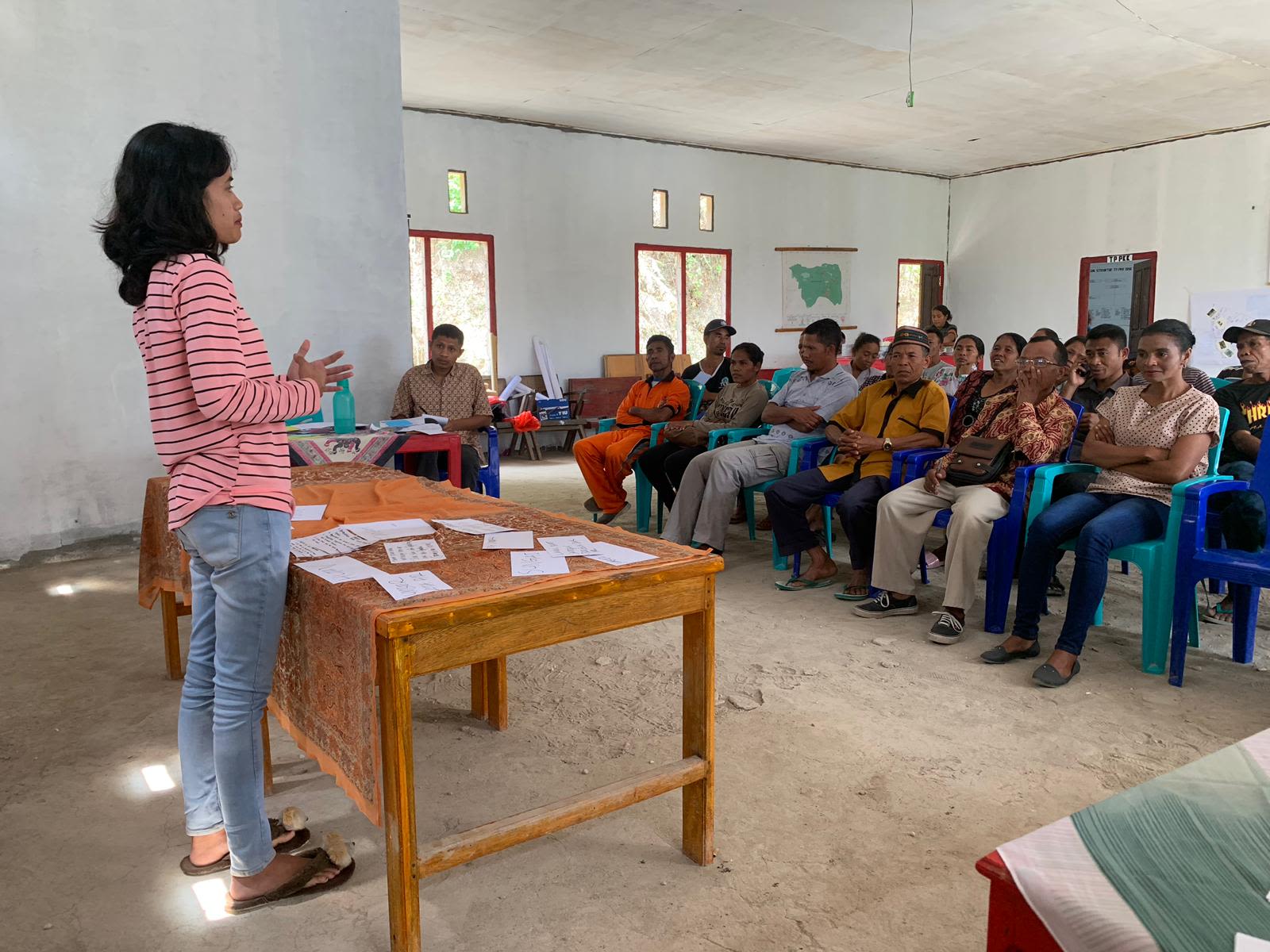


A gender and socially inclusive community meeting to discuss climate impacts on WASH. Photo: Jeremy Kohlitz / ISF-UTS
A gender and socially inclusive community meeting to discuss climate impacts on WASH. Photo: Jeremy Kohlitz / ISF-UTS

Community members taking part in an impact diagram activity. Photo: Jeremy Kohlitz / ISF-UTS
Community members taking part in an impact diagram activity. Photo: Jeremy Kohlitz / ISF-UTS
The most vulnerable groups bear the greatest burden
In Nepal, women and people with disabilities are also facing challenges as climate hazards create obstacles to water supply. Projections suggest that there will be significant increases in temperatures, greater annual rainfall, and greater variations in surface water flow between the wet and dry seasons in the future, Sunetra Lala, WASH sector leader with SNV Netherlands, told Devex. In some districts that Lala’s team works in, vulnerable groups, including girls, pregnant people, and people with disabilities, already struggle to access water points as footpaths become unsafe and there is an increased risk of flooding and landslides during the wet season.
“[Civil society organizations] in the WASH sector really see climate change as a threat to progress and they’re increasingly appreciative of the fact that climate change affects different groups of people in different ways.”
Nepal has made significant progress in WASH service provision in recent years — in 2020, almost 75% of the country’s rural population had access to basic water. Still, less than 16% of those living in rural areas had access to safely managed water — that is water free from contamination and located on premise — and, according to Lala, the rate at which coverage is increasing is slow.
A Muslim village at high risk of annual floods, Ramnagar rural municipality, Sarlahi, Nepal. Photo: Matrika Subedi, Meeting Point
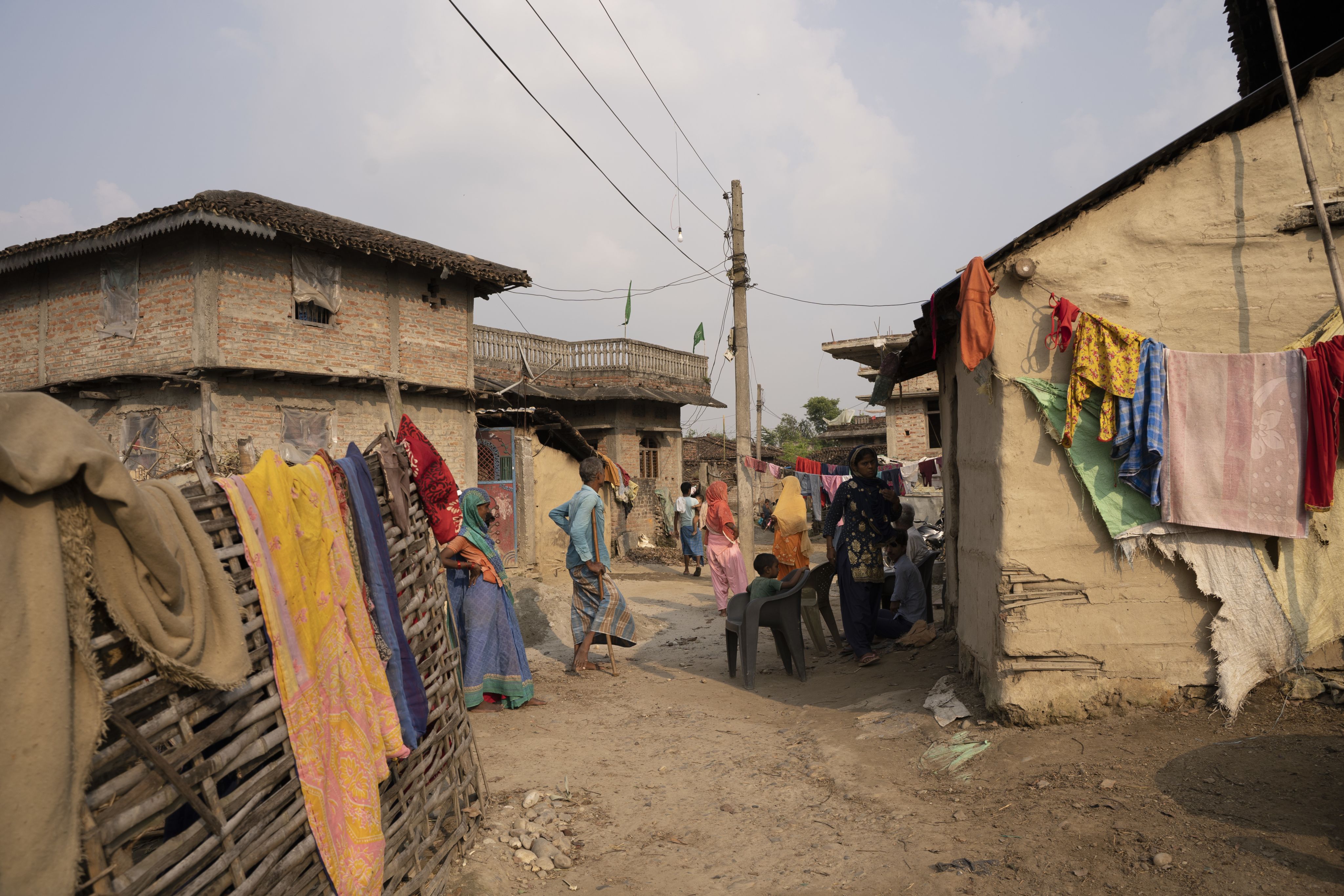
SNV Nepal has been collaborating with local governments in eight rural municipalities and supporting them in the preparation of climate-resilient rural water supply strategies. In WASH, resilience refers to the capacity of communities to consider risk factors — such as floods, landslides, droughts, or storms — in designing or constructing water supply systems, Lala explained. It also refers to the capacity of such systems to be resilient to extreme weather events and the coordinated actions that are required to resume services.

Lalita Devi Jha, woman and child development officer in Ramnagar rural municipality, Sarlahi, Nepal, facilitating a session with mothers' groups on the use and safe disposal of sanitary pads. Photo: Matrika Subedi, Meeting Point
Across the municipalities, focus groups were held to understand the community-level impacts of climate change on their lives, then establish what local level mechanisms could help adapt to those climate shocks. In one municipality, an emergency response team has been formed and a data collection system put in place to be able to provide WASH relief to households most affected by climate change. During the floods of 2020, Lala’s team also noticed that the response was particularly focused on providing emergency support to people with disabilities and vulnerable groups. “They were the first to receive support when the floods hit and that was particularly important for us,” she said.

Lalita Devi Jha, woman and child development officer in Ramnagar rural municipality, Sarlahi, Nepal, facilitating a session with mothers' groups on the use and safe disposal of sanitary pads. Photo: Matrika Subedi, Meeting Point
Lalita Devi Jha, woman and child development officer in Ramnagar rural municipality, Sarlahi, Nepal, facilitating a session with mothers' groups on the use and safe disposal of sanitary pads. Photo: Matrika Subedi, Meeting Point
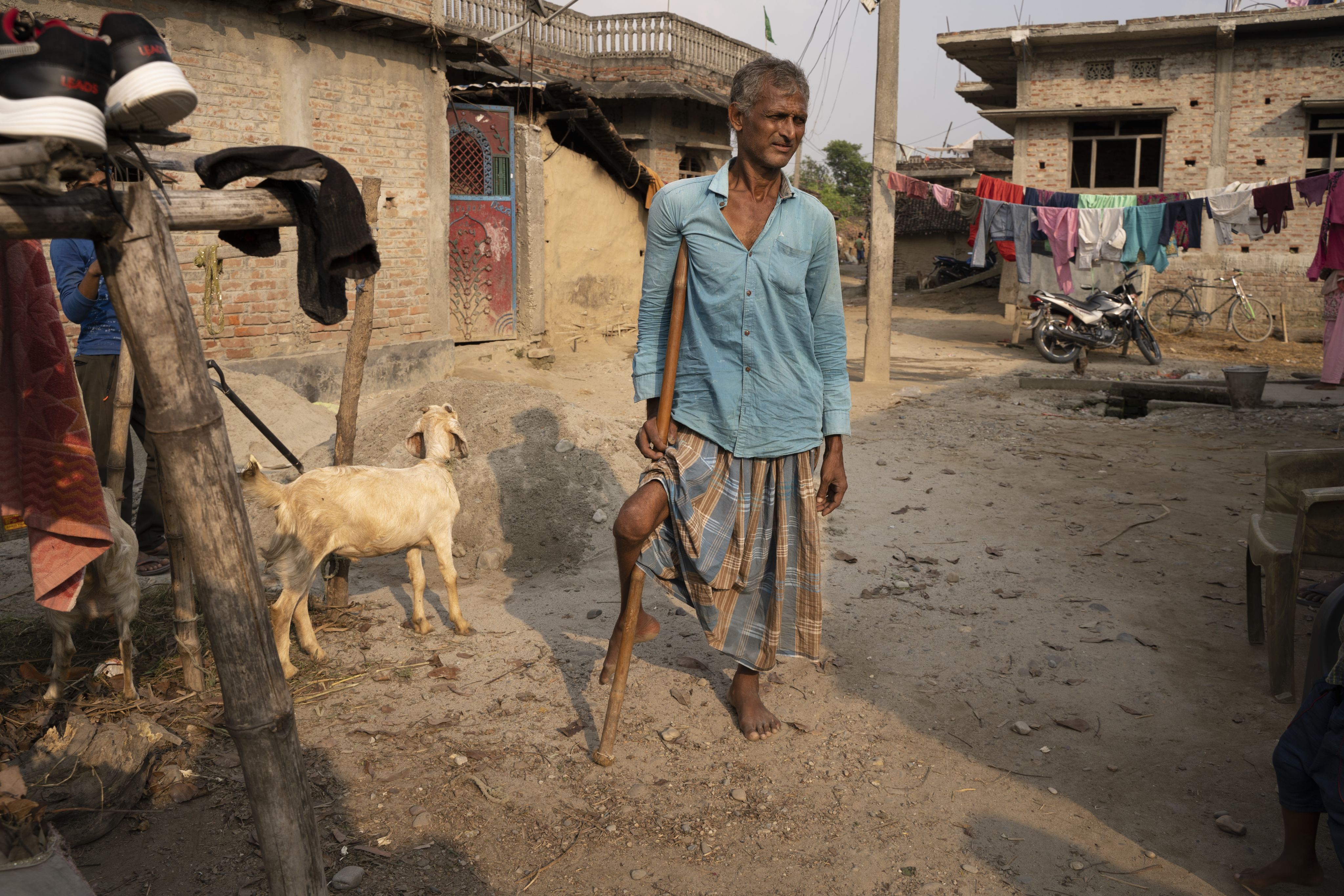
Kaium Khan, a member of an organization for people living with disabilities, Ramnagar rural municipality, Sarlahi, Nepal. Photo: Matrika Subedi, Meeting Point
Kaium Khan, a member of an organization for people living with disabilities, Ramnagar rural municipality, Sarlahi, Nepal. Photo: Matrika Subedi, Meeting Point
What does it take to strengthen WASH systems?
Thousands of miles away in Papua New Guinea, another Water for Women project is supporting one district government in strengthening WASH sector systems and policies and increasing the participation of women and girls, and people with disabilities. The five-year project, which started in 2018, sees WaterAid collaborate with the district level government and provincial health authority to train government officers in data collection to conduct a baseline survey of all WASH services in the district. They then analyze the information and identify the key WASH priorities for the development of a five-year district WASH plan.
“It's not just about the information, it's about how you translate that into knowledge and empower people so they can actually make decisions.”
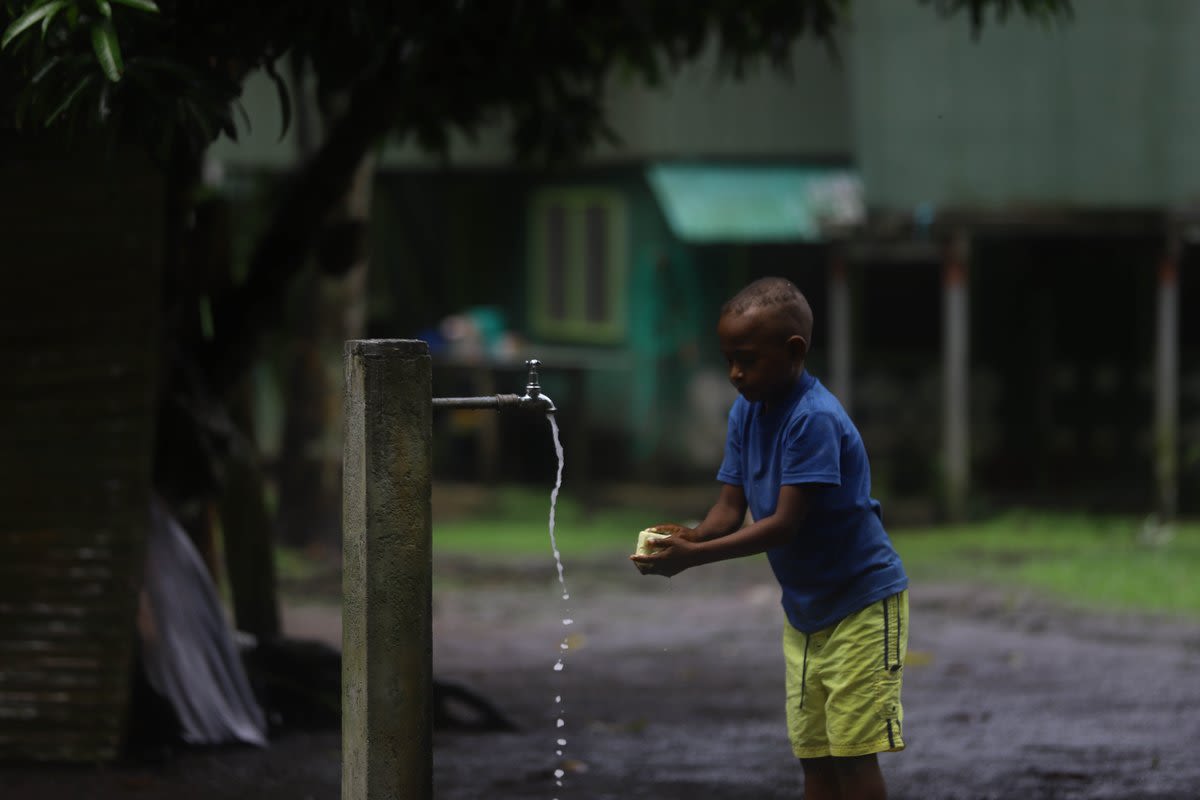
8-year-old Fidelis washing his hands with soap and clean water after using the toilet in Yiwun village, Wewak district, Papua New Guinea. Photo: WaterAid PNG
8-year-old Fidelis washing his hands with soap and clean water after using the toilet in Yiwun village, Wewak district, Papua New Guinea. Photo: WaterAid PNG
Navara Kiene, director of programs at WaterAid PNG, said that discussions at the local district level highlight how climate change is already impacting communities. Unpredictable weather patterns and seasons make it difficult for communities to plan agricultural activities, as well as the storage of water, for example. When water is scarce during periods of drought or when equipment is washed away during flooding, people have no choice but to travel long distances to find and use unprotected water sources, which creates health risks. In the country’s rural areas, 34% of the population rely on surface water for drinking, versus 6% of people in urban areas. Since 2015, the rural population with limited or no basic hygiene facilities has also increased by more than 300,000 people.
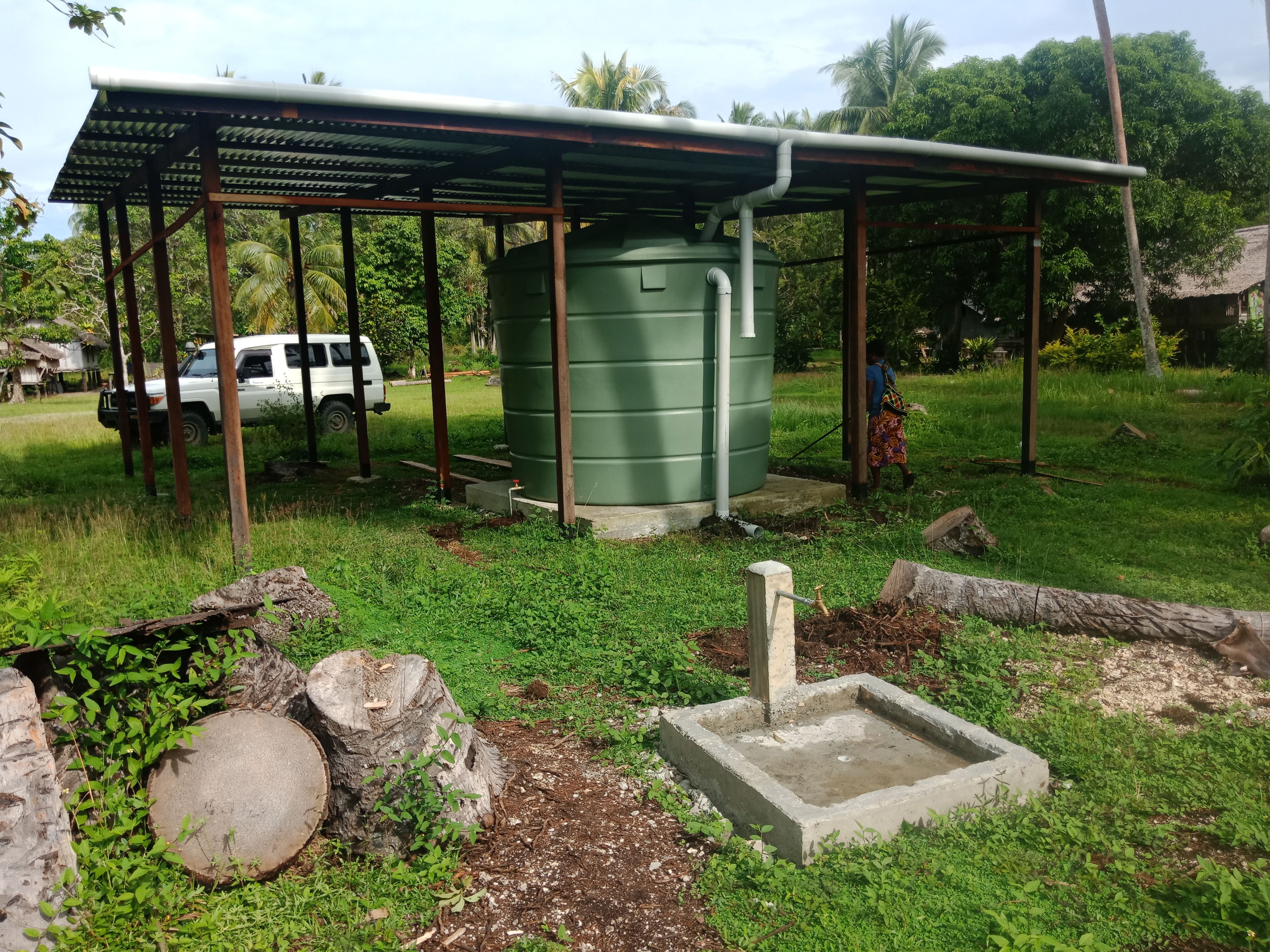
One of three rainwater harvesting systems installed in Wewak district, Papua New Guinea. Photo: Nagasi Namui / WaterAid PNG
One of three rainwater harvesting systems installed in Wewak district, Papua New Guinea. Photo: Nagasi Namui / WaterAid PNG
Together with project partners, Kiene’s team has been working with district government officials on the implementation of an inclusive project cycle — one that considers the needs and participation of women and people with disabilities — and the establishment of a district WASH Coordination Body consisting of district government representatives, key WASH implementers, and rights groups. Strengthening systems in the long term is about creating a model that the government can take on, and identifying roles and responsibilities among the different actors to support that model, Kiene said.
A bird's eye view of the island of New Ireland, Papua New Guinea. Photo: Ethan Daniels / Shutterstock
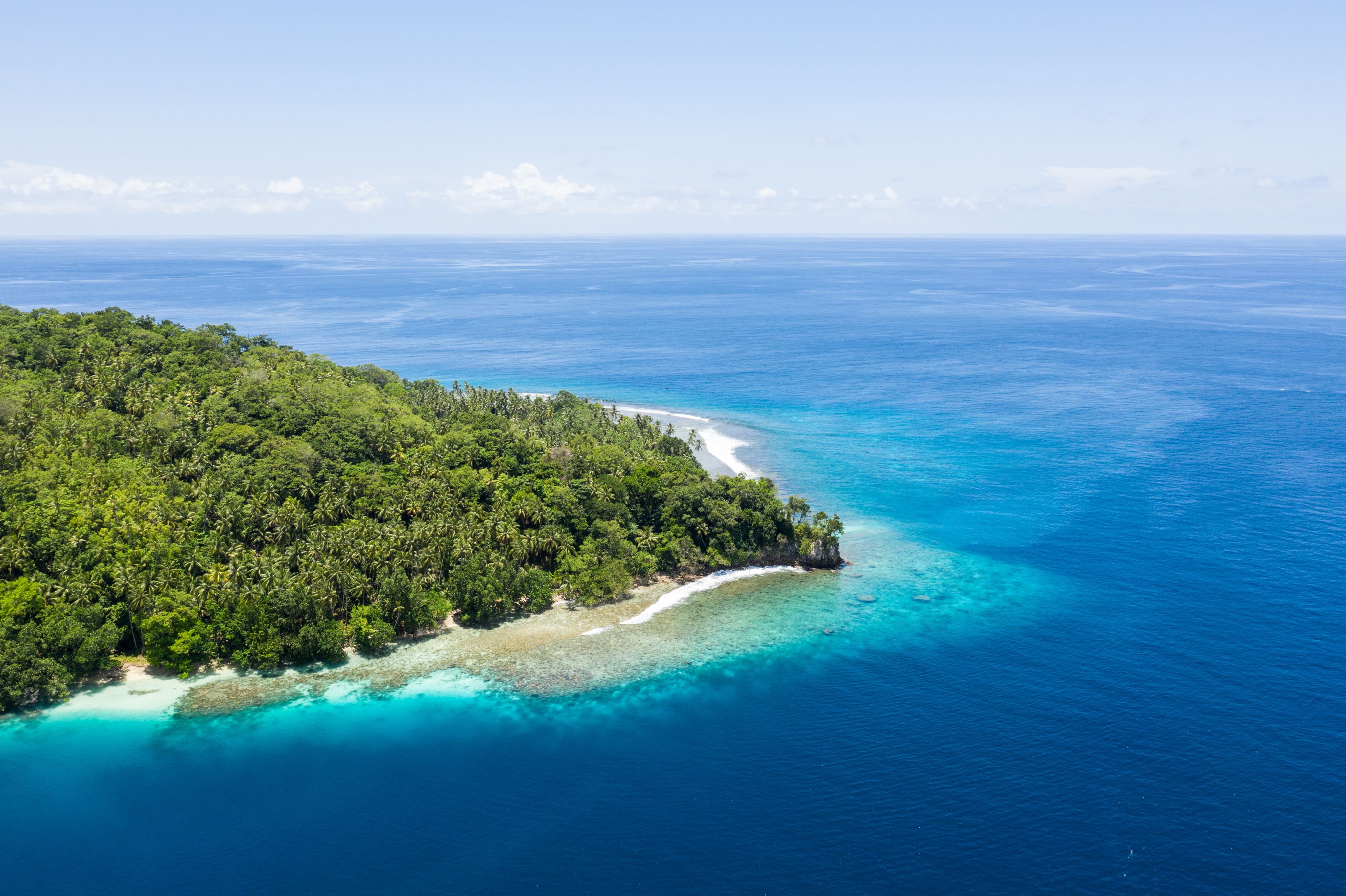
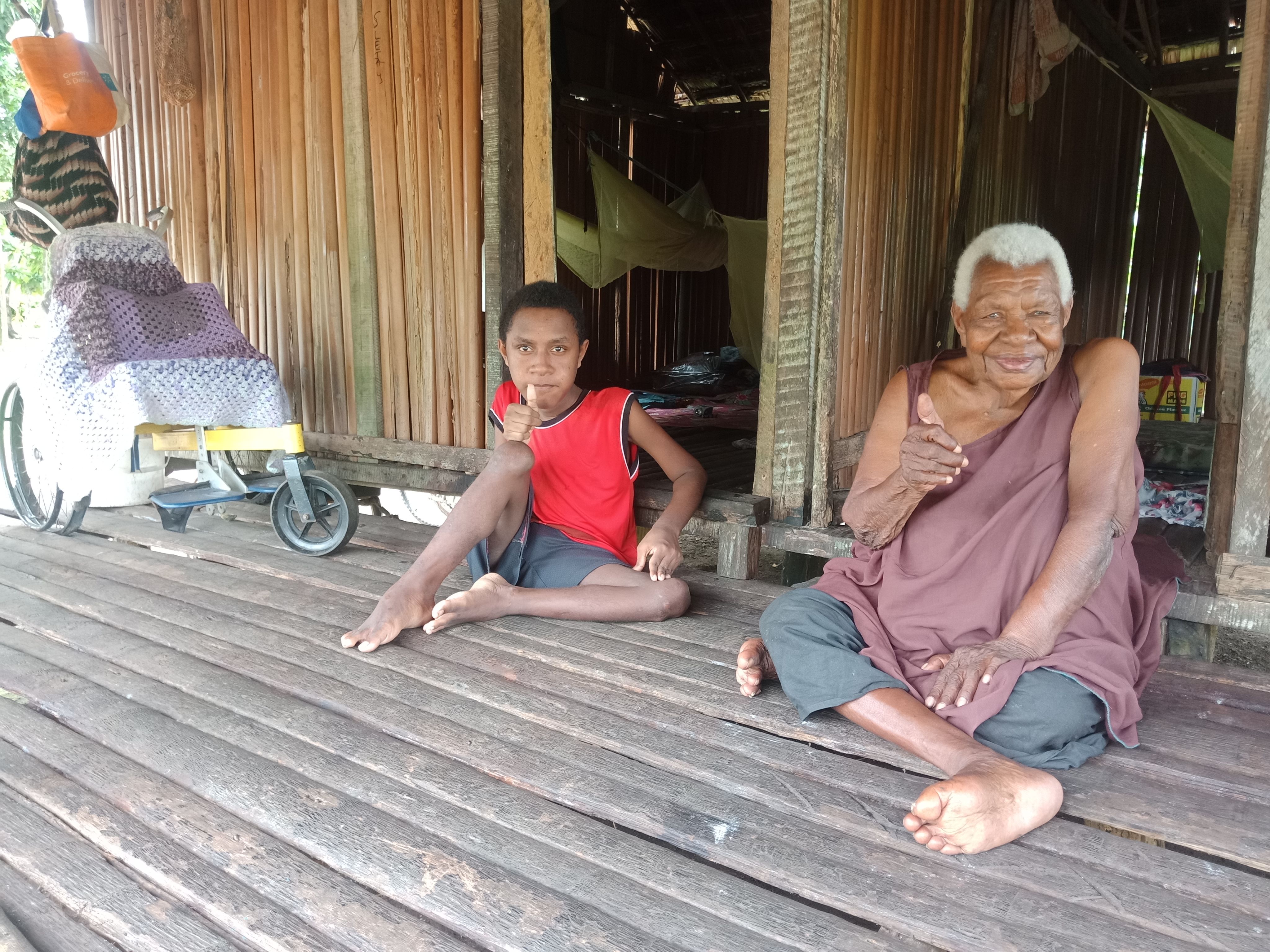
Eddie and Sophia, who are unable to walk, live in Wom village in the Wewak rural local government area of Wewak district. They now have their own tap five meters from their front door. Photo: Nagasi Namui / WaterAid PNG
Eddie and Sophia, who are unable to walk, live in Wom village in the Wewak rural local government area of Wewak district. They now have their own tap five meters from their front door. Photo: Nagasi Namui / WaterAid PNG
Empowering people with knowledge
Elsewhere in Papua New Guinea, efforts are underway to ensure that climate information is translating into action at the local level.
Emily Barbour, senior research scientist at The Commonwealth Scientific and Industrial Research Organisation, is supporting an Australian Pacific Climate Partnership-funded project that aims to enhance resilient WASH in the country’s Islands Region through knowledge brokering. While there is often much climate information available, there can be issues understanding what it means at a local level and what tools and processes are needed, Barbour said. “It's not just about the information, it's about how you translate that into knowledge and empower people so they can actually make decisions,” she added.
The project, which is being implemented in the New Ireland province of Papua New Guinea as well as the Solomon Islands, works with a number of existing programs and supports their teams in thinking about how they can capture climate risk as part of their activities. In looking at water risk, Barbour’s team is particularly interested in ensuring systems are resilient to future change by assessing the current risks and how these could be exacerbated by climate change.
“There's often an assumption that we have to parse through climate data ... to find ways to interpret climate projections and downscale them. ... But it's not essential — you can take meaningful action based on local knowledge and [lived] experience of climate extremes.”
Partners on the ground identified that when people return in large numbers to villages from urban areas during the holiday season it puts pressure on existing water infrastructure. “[It’s] these existing pressure points that we can already start to look at that, we can anticipate that [for example] if it did get dry in the future, that would just put an additional pressure on the system,” Barbour said. In rural areas of Papua New Guinea, only about 15% of the population have access to basic sanitation services, while 18% of people practice open defecation compared to urban areas where 49% of people have access to basic or safely managed services.
Among the various activities, catchment maps and other visual aids were provided to make information accessible and individual knowledge brokers were identified among the partner organizations who are now working to develop facilitation guides for use in communities. “One of the challenges is ... the information not being sufficiently [localized] for people to know what to do with it,” she said. “There's [also] a lot of uncertainty in terms of what the projections are [so] what does that actually mean for us, what do we need to do differently now.” Barbour advised practitioners in the sector to not be “paralyzed by that uncertainty” but to use techniques such as scenario planning to think through what drier or wetter seasons could mean.
The next stage of the project is to hear from women and other marginalized populations to assess their knowledge around water systems and what skills they need to participate more in decision making.
Participants of a community plumbing workshop in New Ireland, Papua New Guinea. Nineteen three-day workshops were held across the province, with both men and women taking part. Photo: Live & Learn Environmental Education
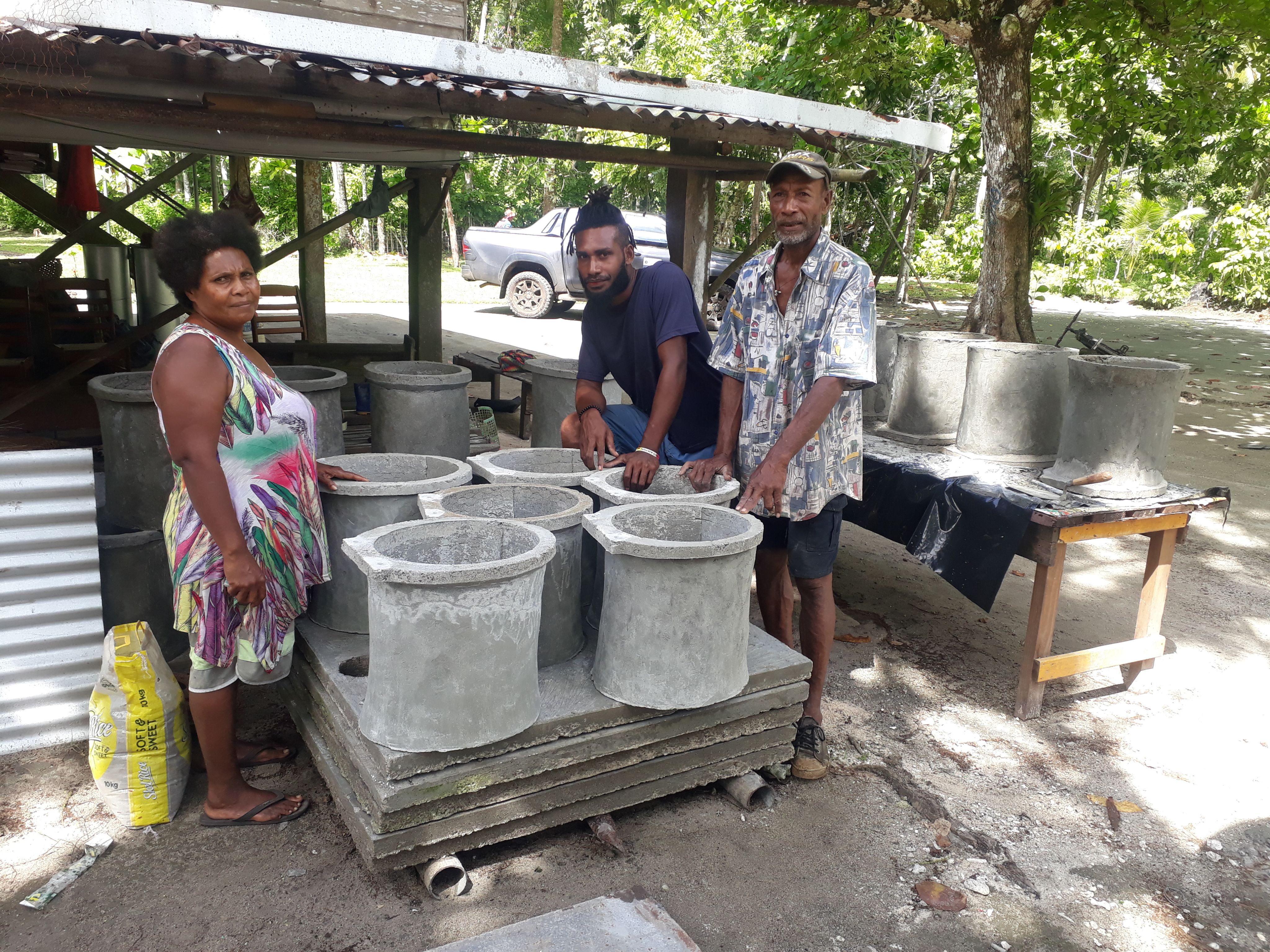
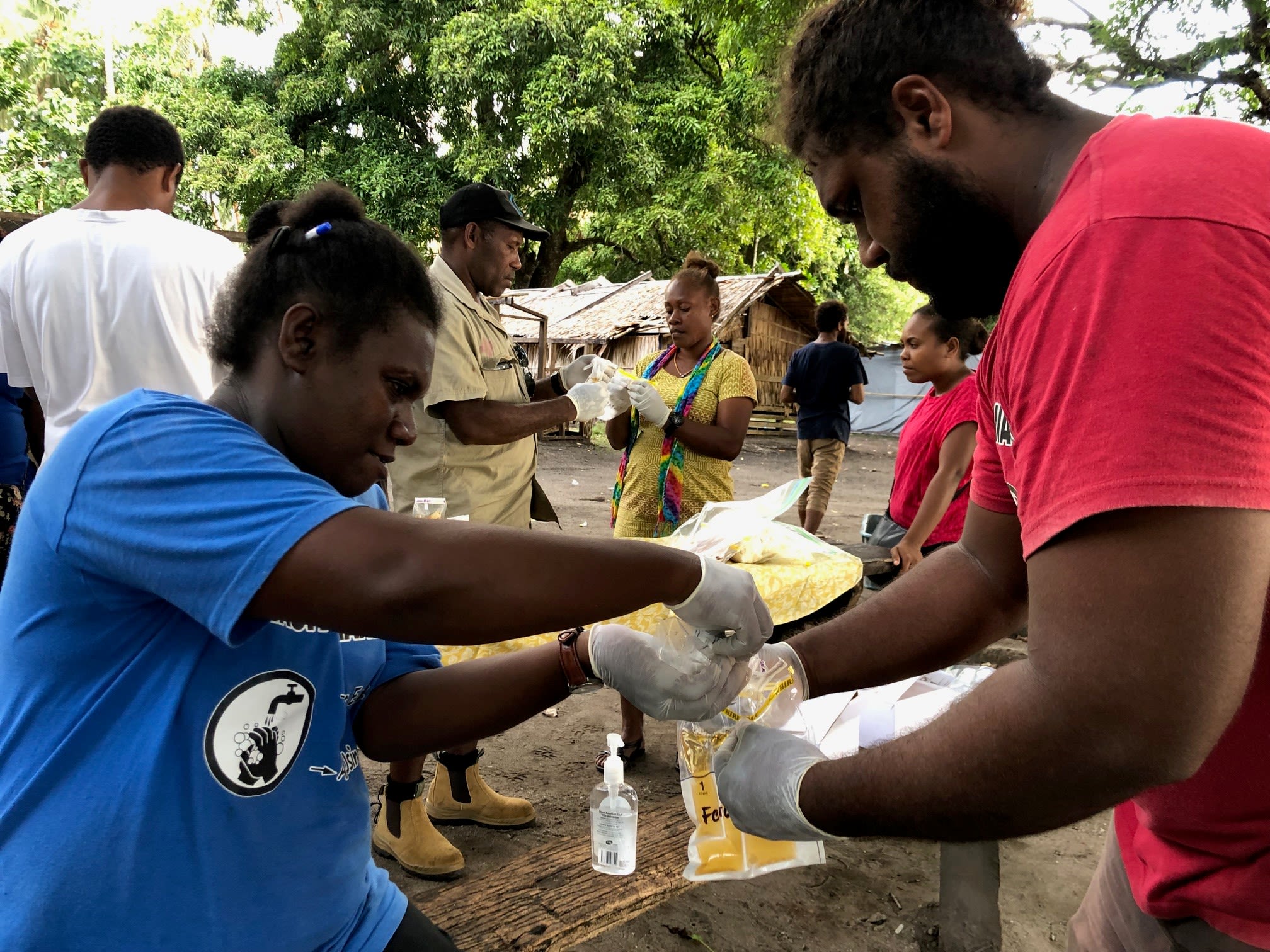


Community facilitators test water quality during community-based water security improvement planning, or CWSIP, facilitation in the Solomon Islands. Photo: Regina Souter / International WaterCentre and Live & Learn Environmental Education
Community facilitators test water quality during community-based water security improvement planning, or CWSIP, facilitation in the Solomon Islands. Photo: Regina Souter / International WaterCentre and Live & Learn Environmental Education

Community representatives and leaders discuss hazards and risks to their water system during the CWSIP process in Solomon Islands. Photo: Live & Learn Environmental Education and Plan International
Community representatives and leaders discuss hazards and risks to their water system during the CWSIP process in Solomon Islands. Photo: Live & Learn Environmental Education and Plan International
Best practices for inclusive WASH
Water will always be a challenging space with competing objectives and a range of issues, according to Barbour.
It’s important to consider the connection between people and nature, Barbour said. The issue of water availability might, for example, be a “very human challenge” in terms of who has access to and operates the infrastructure, or who was involved in the design processes, she explained.
Read the report:
Making the Critical Connections between Climate Resilience and Inclusive WASH: Lessons from Water for Women
Kohlitz agreed that it’s critical to look at the social processes as much as the environmental processes in understanding climate change. In the same way you would unpack how a flood will affect infrastructure, you can unpack why some people are put in harm's way more than others or have less capacity to respond to climate change, he said.
He urged practitioners to listen to the lived experience of local communities, particularly women, people with disabilities, and other marginalized groups who have critical knowledge of how climate hazards affect their access to WASH. “There's often an assumption that we have to parse through climate data ... to find ways to interpret climate projections and downscale them,” Kohlitz said, “but it's not essential — you can take meaningful action based on local knowledge and [lived] experience of climate extremes.”
Kiene also encouraged a bottom-up approach that starts with discussions in the target communities. Listen to what is identified as the main impacts of climate change and how they would design a project, she said, because “[those communities] will be the custodians of any infrastructure and making sure that it’s sustainable.”
Women collecting water during dry season in Laos. Photo: Bart Verweiji / SNV
Women and girls fetching water in Dandikot District Buner, Khyber Pakhtunkhwa, Pakistan. Photo: Saima Javed / IRC

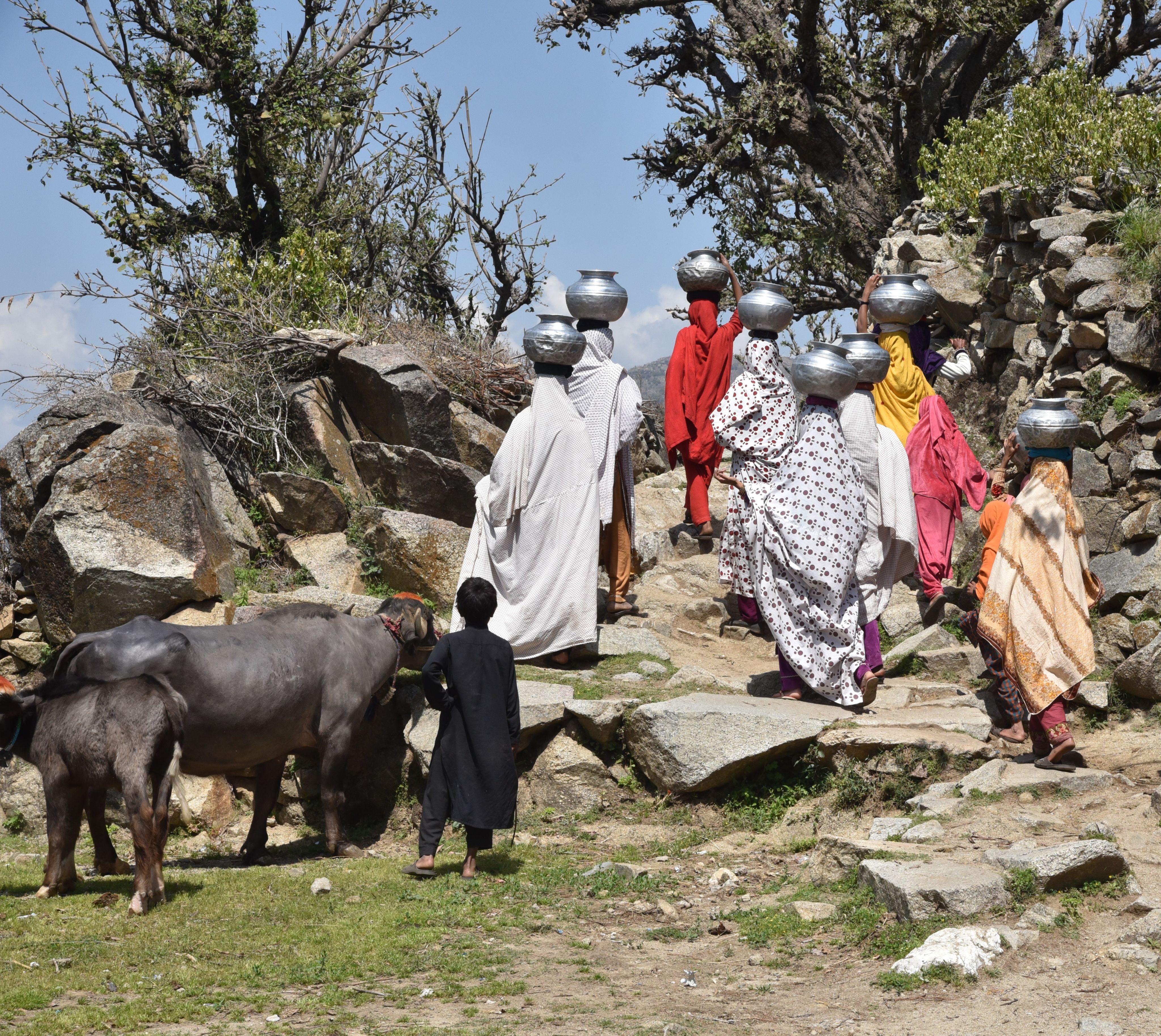
Credits
Reporter: Emma Smith
Editor: Richard Jones
Photos: ISF-UTS / SNV Netherlands Development Organisation / CFAR / IWMI / WaterAid PNG / IRC / International WaterCentre / Live & Learn Environmental Education / Shutterstock / Plan International
Video: SNV
Multimedia producer: Naomi Mihara
Produced in partnership with


Visit the WASH Works series for more coverage on water, sanitation, and hygiene — and importantly, how WASH efforts intersect with other development challenges. You can join the conversation using the hashtag #WASHWorks.
Get the latest news from this content series in the daily must-read global development newsletter.

